When you discover a leak in your central heating system, the first thing that may come to mind is booking a boiler service. However, it’s important to be aware that a boiler service alone will not solve the problem.
While a Gas-Safe engineer can certainly inspect your boiler components, they may not have the necessary time and tools to address more complex issues within the system. It’s possible for your boiler to receive a clean bill of health, yet still have a serious leak somewhere in the central heating pipes.
To effectively and cost-efficiently tackle your leak, it is recommended to utilize a Trace and Access service provided by a professional leak detection company.
To ensure that your entire house stays warm, the water in your central heating system is kept under pressure. However, if this pressure drops too low, your boiler will automatically shut off, leaving you without heat or hot water.
If you’re facing this issue, it may be helpful to seek the assistance of a professional leak detection service. But before we delve into how we can help you solve your central heating pressure problems, let’s first understand why leaks occur. Additionally, we’ll discuss a couple of steps you can try on your own to potentially resolve the problem.
Rest assured, we’re here to guide you through this process and make sure your central heating system is back up and running efficiently.
Central heating can be a bit complicated, but don’t worry, we’ve got you covered! Let’s talk about the pressure gauge on your boiler. It’s that handy little gauge you’ll find on the front, and it’s there to help you keep an eye on things. Now, most boilers have a hydraulic dial for their pressure gauge, but there are some fancy ones out there with a digital display. How cool is that?
Okay, let’s get down to the nitty-gritty. When your heating is off, you’d typically want your boiler pressure to be around 1 bar. But when the heating is on and your system is all warm and toasty, you’re looking at around 2 bar. It’s like a little indicator that tells you everything is running smoothly.
Now, here’s the thing. If your pressure reading is lower than what we just mentioned, it’s a sign that something might be up. It could mean that you’ve got a pesky leak somewhere in your system. Nobody likes leaks. Or, it could be that you’ve got some air trapped in there. Air, not so great either. But don’t worry, we’ve got solutions for both of these issues.
So, next time you glance at that pressure gauge, you’ll know exactly what’s going on. No more confusion, just a happy and warm home. Stay cozy, my friend!

Leaking central heating pipes or a loss of pressure in your boiler may seem like mere inconveniences, but they can lead to significant and costly damage if not addressed promptly.
The issue lies in the fact that your central heating system runs throughout your entire house, hidden beneath your floors, within your walls, and even extending into your loft space. Consequently, water can leak in places that are not immediately visible, and substantial damage can occur before any signs become apparent.
Even a small and steady drip of water can result in dampness within the structure of your home. If not dealt with swiftly, the cost of rectifying the situation can easily amount to thousands, and in some cases, tens of thousands of dollars.
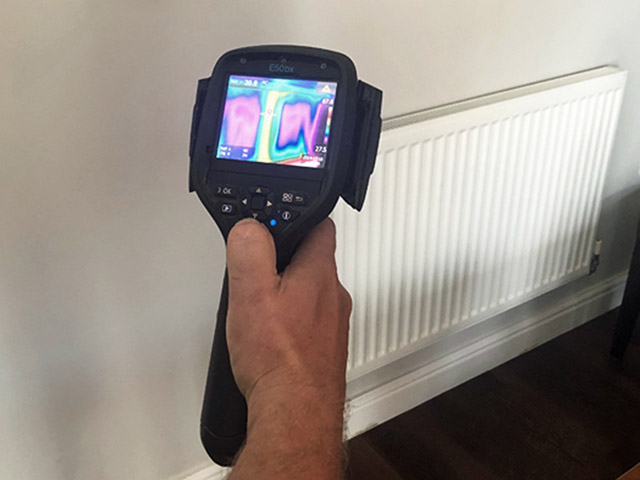
Air can be a real pain in the neck for central heating systems. It’s just too darn easy to compress! When the pressure in your system rises, the air gets squished by the water, and then your system pressure drops. Talk about a rollercoaster ride!
But fear not, my friends, for there is a solution to this pesky problem. All you need is a trusty bleed key (and maybe a towel if you’re feeling a bit clumsy). With the bleed key in hand, you can gently release the radiator vent and bid farewell to any trapped air. It’s like giving your radiator a much-needed exhale, just like when you let the air out of a bike or car tire. But remember, there’s water in there too, so keep your wits about you. Once the hissing stops, tighten that vent back up before you end up with a watery surprise.
Now, don’t forget to repeat this process with each and every one of your radiators and towel rails. It’s a bit of a chore, but trust me, your heating system will thank you for it. And who knows, you might even find a strange sense of satisfaction in conquering those pesky pockets of air. So grab your bleed key, get ready for a hissing symphony, and let’s show that air who’s boss!
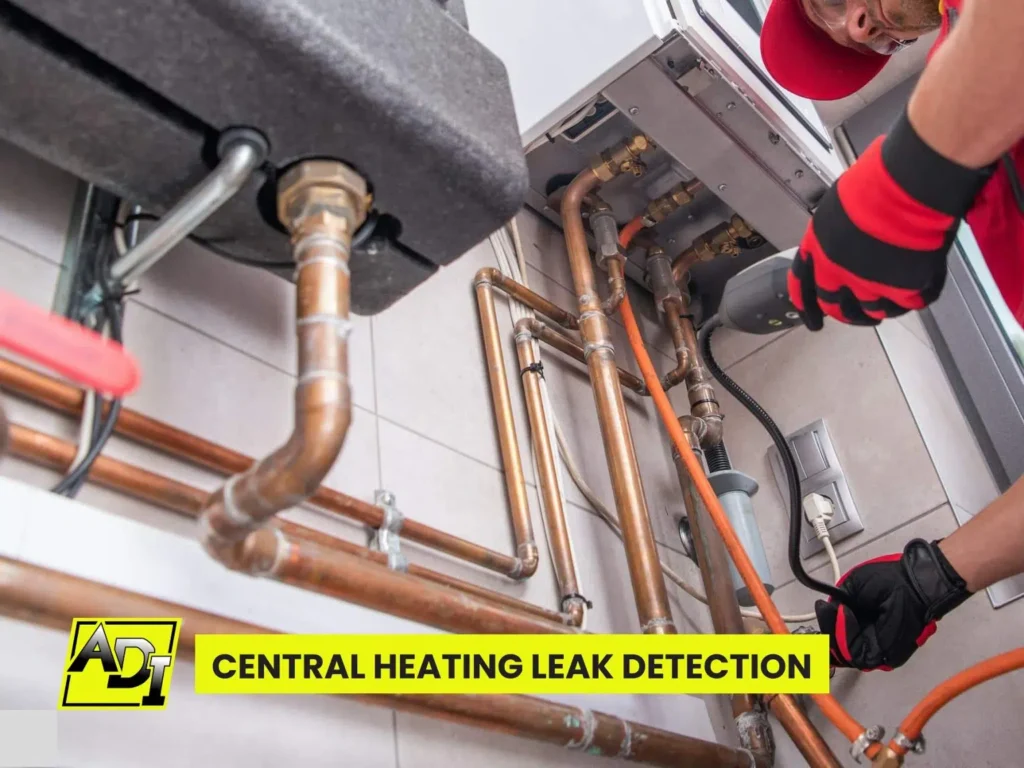
Assuming you’ve managed to get air out of your radiators, you’ll find that the pressure in your boiler might have dropped again. You’ll need to top this up using the ‘filling loop’.
On many boilers, the filling loop is part of the system – but on some, it’s an additional length of hose that you’ll need to secure to the pipework near the boiler. If you’re unsure about any part of the process, you should check your boiler instructions – or check on your boiler manufacturer’s website – as many have helpful videos explaining what to do.
Usually, topping up the system fluid and pressure will require you to:
It’s vital that you only increase the pressure in your boiler if you’ve followed your manufacturer’s instructions and feel absolutely confident doing so. Overfilling a boiler can cause damage (and further leaks) – so be careful.
If you notice your boiler pressure dropping away straight after you’ve followed this procedure, you should get in touch with us as quickly as possible – as this would indicate a large leak that needs immediate attention.
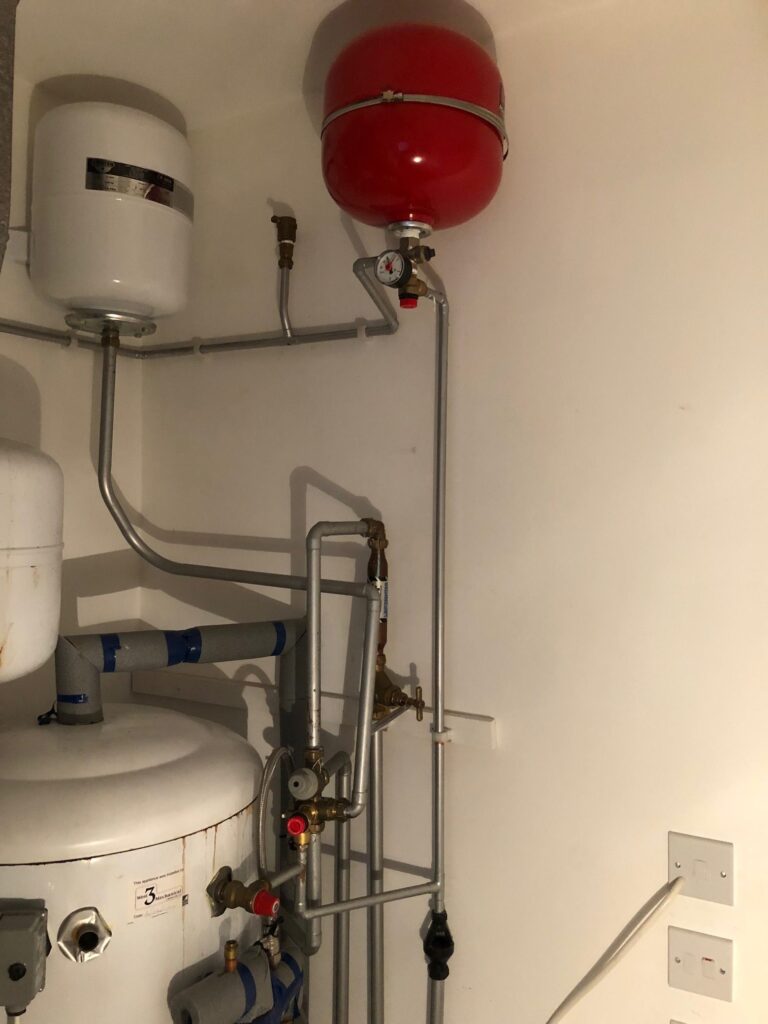
If you manage to refill your boiler and it maintains good pressure after bleeding your radiators, that’s fantastic news! However, if your boiler keeps losing pressure, don’t just keep topping it up and neglecting the underlying issue.
The fluid in your radiators isn’t just plain water; it’s a mixture of various chemicals known as an “inhibitor.” This inhibitor fluid is added during the installation of your boiler or heating system to prevent the formation of sludge or corrosion in your pipes. It comes in a concentrated formula that needs to be diluted with water in your system. However, if it’s diluted too much, it becomes ineffective, leading to increased wear and reduced efficiency. If you have a leak and keep topping up with water, eventually, you’ll have no inhibitor left.
Continually topping up from the filling loop isn’t a wise idea because it can cause significant damage. If your system consistently loses pressure, it’s time to take more serious measures.
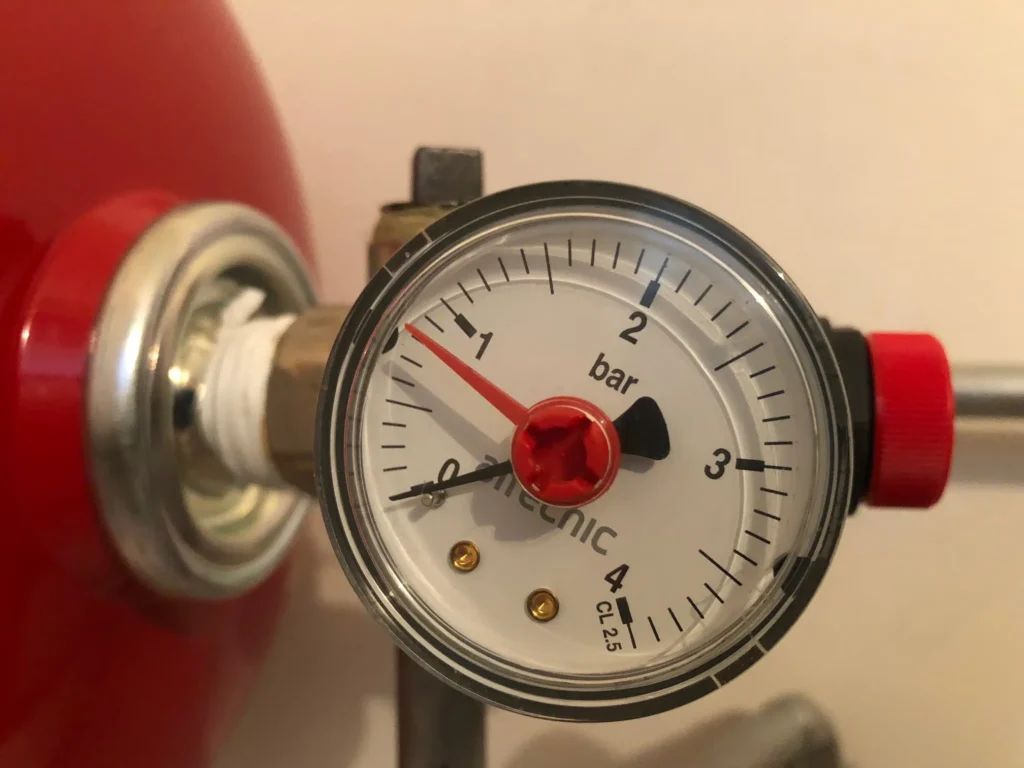
When you imagine hiring a company to locate a leak, you might envision your carpets and floors being torn up, walls being punctured, or even your driveway being excavated. However, the truth is far from that!
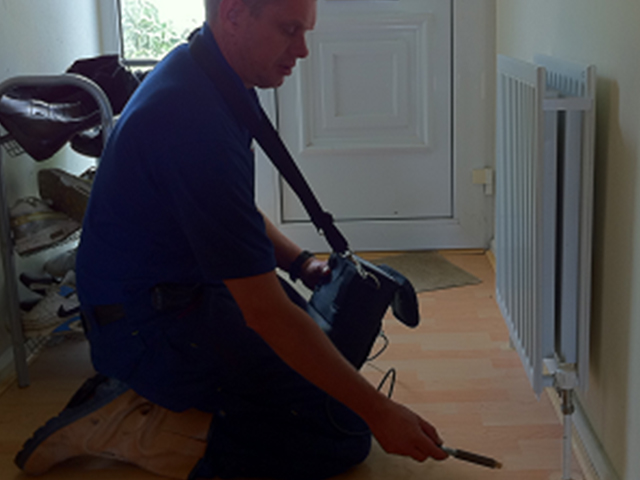
Tracer gases offer a hassle-free solution for identifying leaks in central heating systems. The process begins by draining the heating system and replacing it with a completely safe and non-toxic gas mixture. Then, a highly sensitive probe is carefully maneuvered along the pipework throughout the property. Whenever the gas seeps through any cracks, the probe detects it, pinpointing the exact location of the leak. Interestingly, these gases are so light that they can rise through various materials like wood, carpet, tiles, and even concrete! This incredible characteristic allows us to locate the leak without causing any disruption or damage to your beloved home.
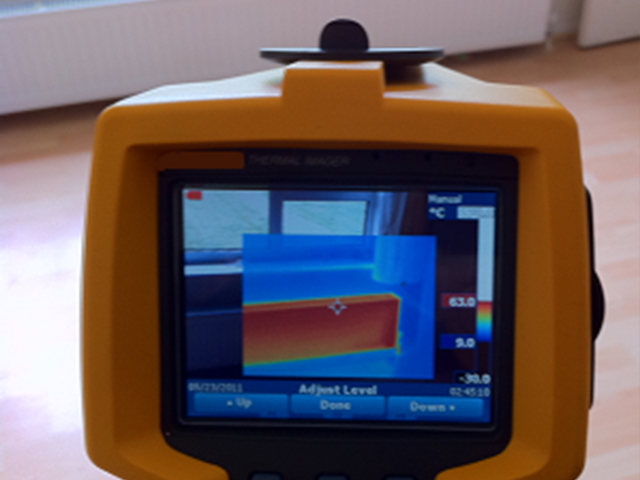
Thermal imaging is an incredible technique we use to uncover those sneaky central heating leaks. With the help of a fancy camera that captures the thermal energy emitted by pipes, we can effortlessly pinpoint the exact location of these hidden heating pipes, whether they're lurking beneath the floors or concealed within wall cavities. By analyzing the images produced, our trusty thermal imaging camera detects any abnormal temperature variations caused by water leaks. It's like having a superpower to see through walls and floors! Of course, this technique works hand in hand with other leak detection methods, ensuring our engineers have all the information they need to track down those elusive pipes and fix the problem.
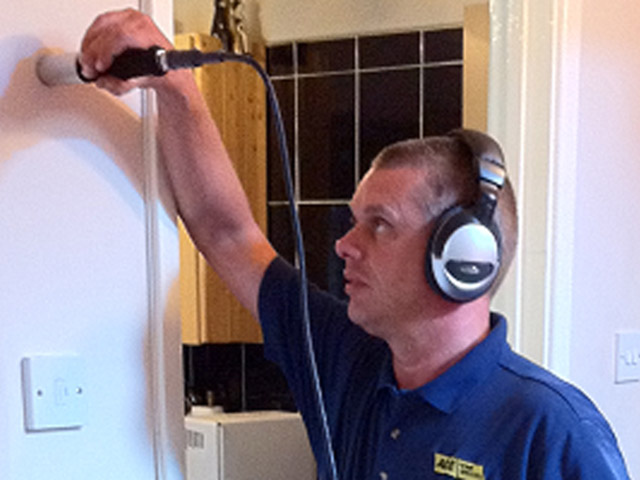
An acoustic microphone is like a super sensitive detective that can hear the sound of a leaky pipe. Whether it's a big leak or a tiny one, water always makes noise. Our super cool listening devices can actually pick up on these sounds and make them louder for our engineers to hear. And get this - we can even figure out exactly where the leak is coming from! We use two listening devices at the same time to do some fancy math and calculate how far away the noise is from each microphone. This helps us pinpoint the exact location of the leak, even if it's deep under the floor or hidden inside a wall. Cool, right?
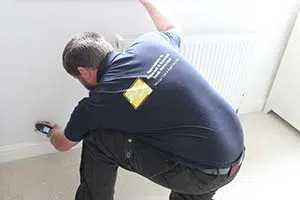
Moisture meters are used to check the moisture levels on various surfaces. Our skilled engineer will conduct multiple readings in your home, specifically in areas where central heating pipes and the boiler are located. This thorough examination helps us identify areas with higher moisture levels, which can be an indication of a water leak from the central heating system. In some cases, we might need to drill a small hole to obtain more accurate readings within the surface. Although this method is not entirely non-invasive, it causes minimal damage.
We understand that testing certain materials can be more challenging than others, but our expert team ensures that the process is as smooth as possible. So rest assured, even with the slight intrusion, you'll hardly notice any adverse effects.
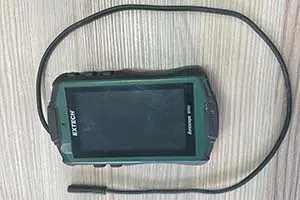
Borescopes are like magical inspection cameras that can go where no person can. With their flexible tube, equipped with a light source and camera at the end, they capture high definition images and videos in real time. It's like having a secret window into those hard-to-reach places like inside walls, floors, and tight spaces, all to uncover any sneaky water leaks. To use them, a tiny hole is drilled into the area that needs inspection, but don't worry! The borescope is so small, just 6mm in diameter, that the hole is barely noticeable. And if you're concerned about leaving evidence behind, fear not! The hole can be easily repaired, leaving no trace of its brief existence.
There’s a range of Central Heating leak sealants that claim to offer a quick solution to finding and fixing a leak in a pressurised system – but be warned; they’re never as effective as physically dealing with the problem.
The issue is, leak seal is not an exact science. It may partially fix the leak – but it also might attach to rust and corrosion to cause further problems. There are instances where sealant has led to bigger issues needing repairs elsewhere in the system.
Don’t be tempted by a sticky-plaster approach to a problem that can cause serious damage to your property.
Virtually all building insurance policies cover ‘Trace and Access’ for central heating leaks – so any charge will usually be refunded to you. What’s more, we have partners who are on hand to help you deal with any related insurance claim – so you don’t need to worry about the paperwork or phone calls involved.
We know better than anyone that being in a home with a leak, no heating, and no hot water is stressful enough; so we’ll make sure you’re helped with every step – we’ll even ensure you’ve got all the reports you need to support your insurance claim.
If you suspect that your central heating system might have a leak, it’s important to act quickly in order to save on costs. Don’t hesitate to reach out to us at 01635 813694. Our team of friendly and knowledgeable experts is ready to assist you with your central heating leak today.
We serve the whole of Newbury, Berkshire including all villages in the area.
Privacy Policy | Terms & Conditions | Sitemap | Registered Office Address: 128 City Road, London, United Kingdom, EC1V 2NX